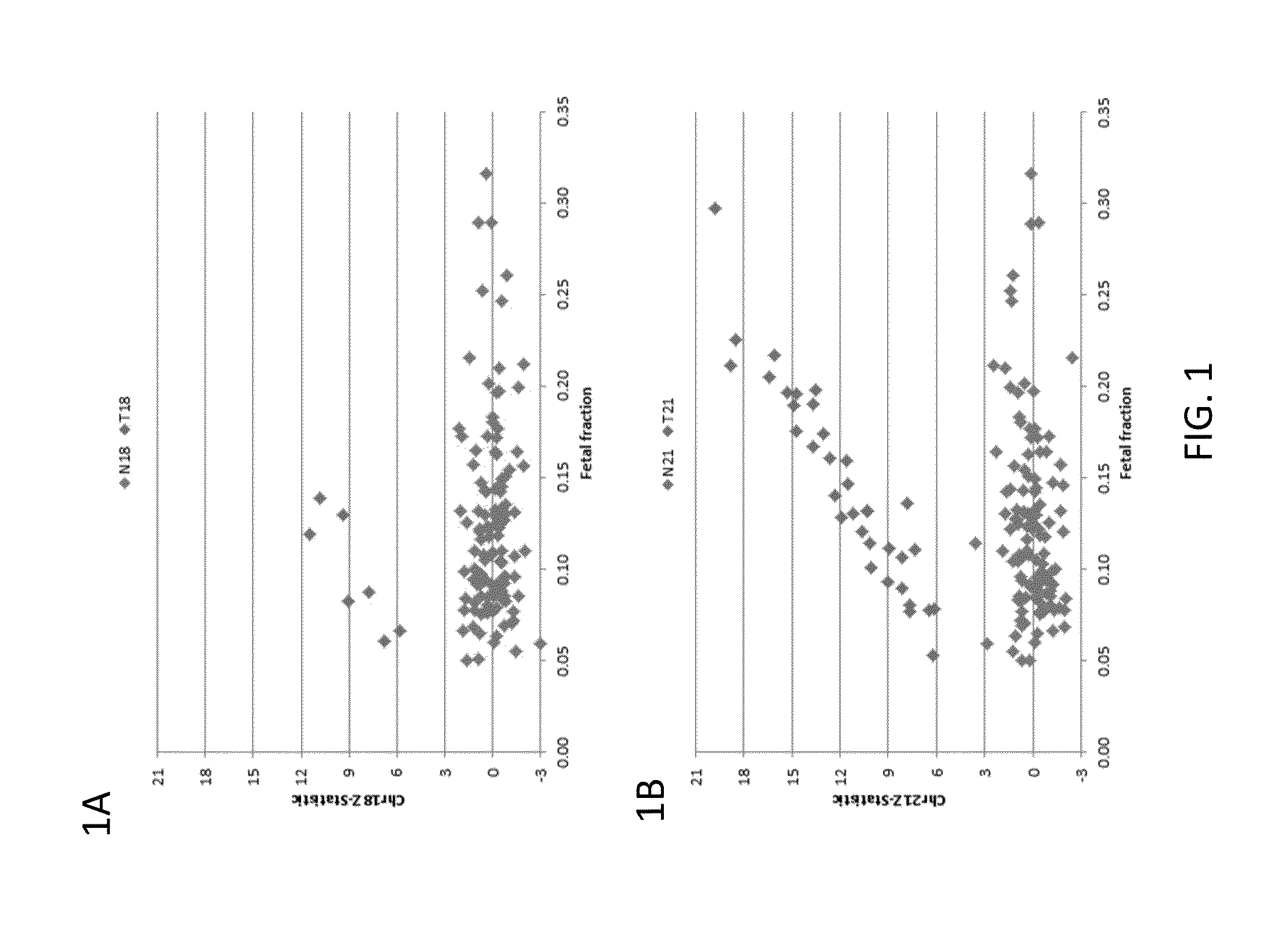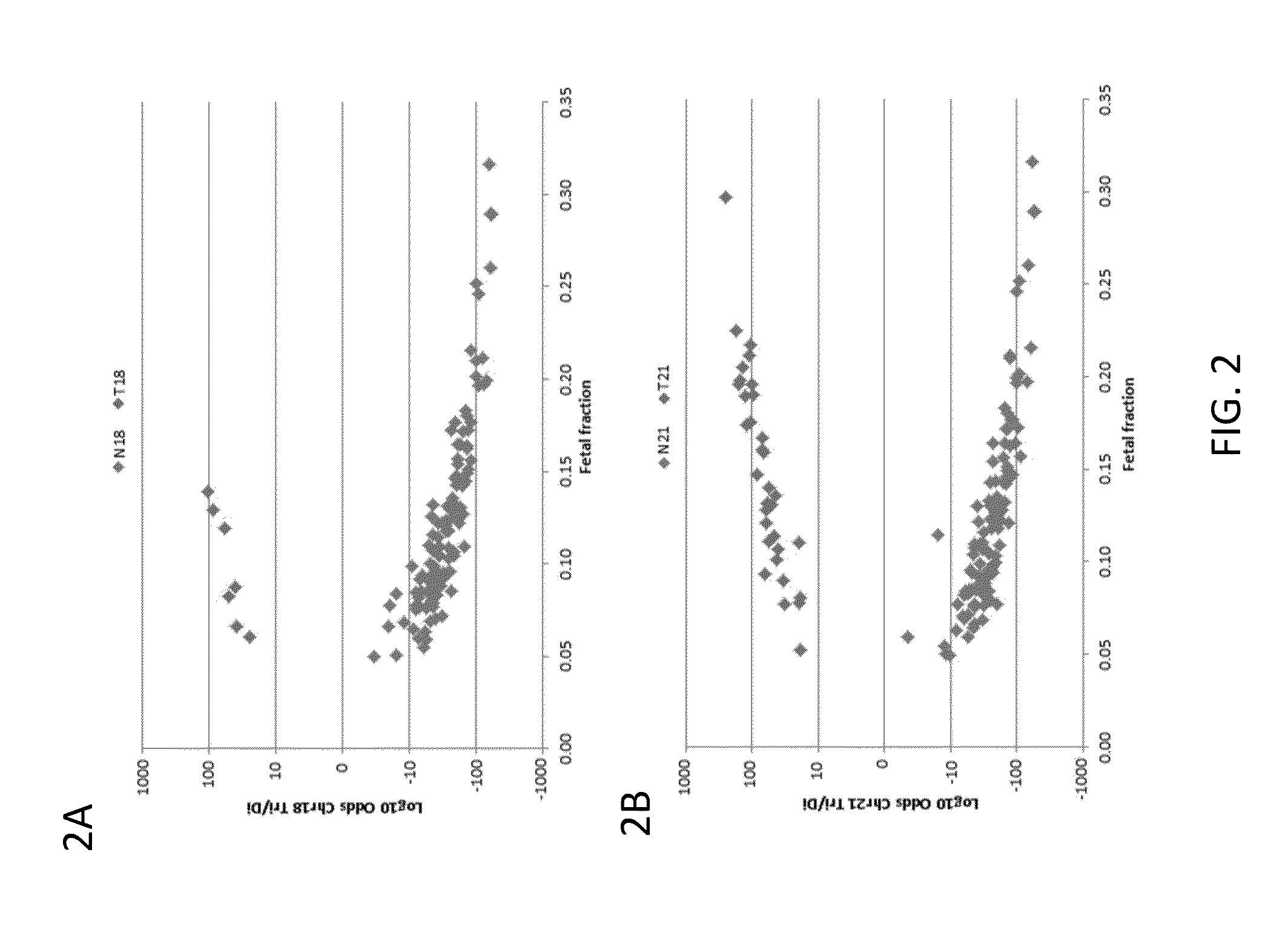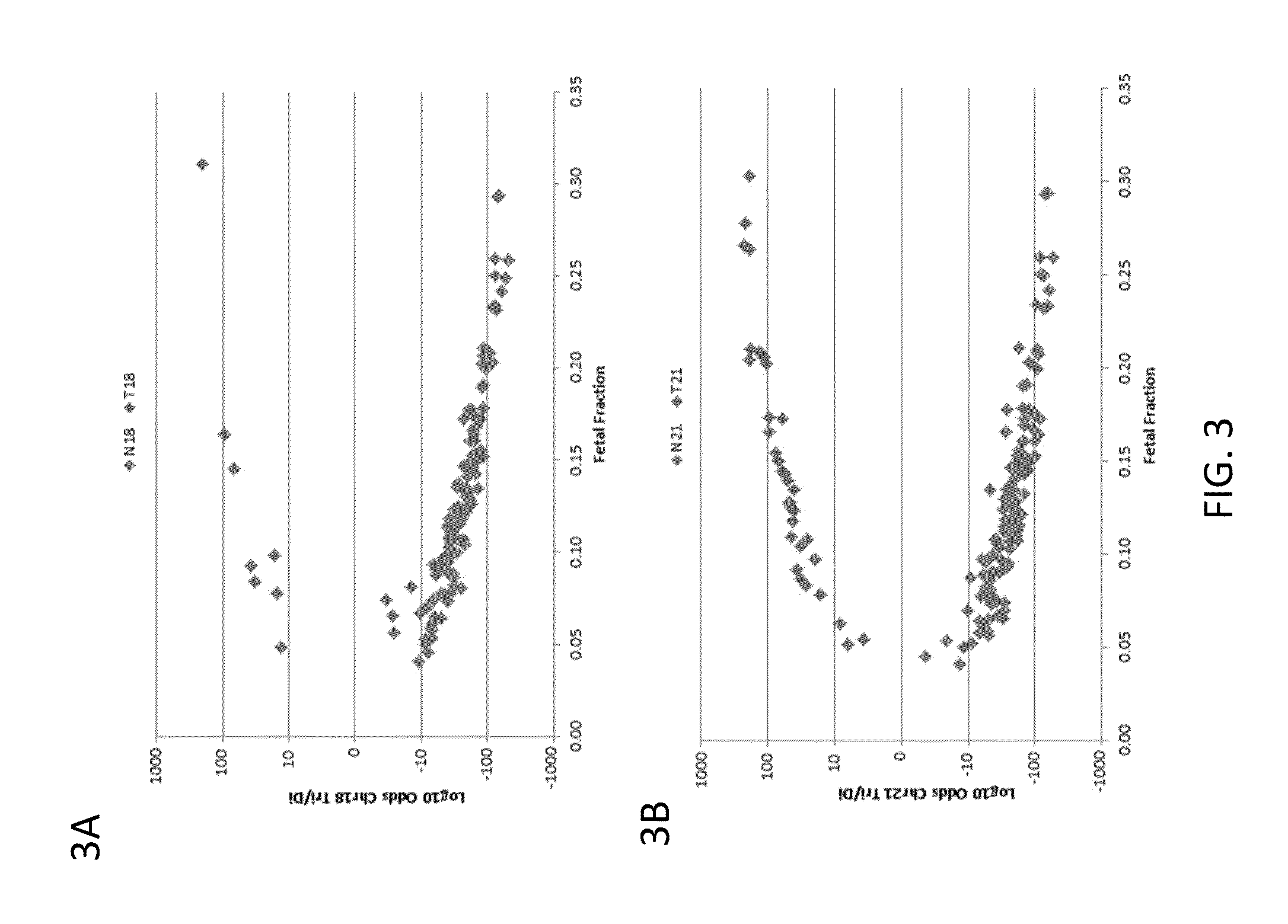Detection of genetic abnormalities
a technology of genetic abnormalities and detection methods, applied in the direction of microbiological testing/measurement, biochemistry apparatuses and processes, etc., can solve the problem of inherently inefficient methods
- Summary
- Abstract
- Description
- Claims
- Application Information
AI Technical Summary
Benefits of technology
Problems solved by technology
Method used
Image
Examples
example 1
Sample Procurement
[0210]Subjects were prospectively enrolled upon providing informed consent, under protocols approved by institutional review boards. Subjects were required to be at least 18 years of age, at least 10 weeks gestational age, and to have singleton pregnancies. A subset of enrolled subjects, consisting of 250 women with disomic pregnancies, 72 with T21 pregnancies, and 16 with T18 pregnancies, was selected for inclusion in this study. The subjects were randomized into a first cohort consisting of 127 disomic pregnancies, 36 T21 pregnancies, and 8 T18 pregnancies, and a second cohort consisting of 123 disomic pregnancies, 36 T21 pregnancies, and 8 T18 pregnancies. The trisomy status of each pregnancy was confirmed by invasive testing (fluorescent in-situ hybridization and / or karyotype analysis). The trisomy status of the first cohort was known at the time of analysis; in the second cohort, the trisomy status was kept blinded until after analysis.
[0211]8 mL blood per sub...
example 2
Design of Primer Pairs for Amplification of Selected Genomic Regions
[0212]Assays were designed based on human genomic sequences, and each interrogation consisted of two fixed sequence oligos per selected nucleic acid region interrogated in the assay. The first oligo, complementary to the 3′ region of a genomic region, comprised the following sequential (5′ to 3′) oligo elements: a universal PCR priming sequence common to all assays: TACACCGGCGTTATGCGTCGAGAC (SEQ ID NO:1); a nine nucleotide identification code specific to the selected genomic region; a hybridization breaking nucleotide which is different from the corresponding base in the genomic region; and a 20-24 bp sequence complementary to the selected genomic region. These first oligos were designed for each selected nucleic acid to provide a predicted uniform Tm with a two degree variation across all interrogations in the assay set.
[0213]The second fixed sequence oligo, complementary to the 5′ region of the genomic loci, compr...
example 3
Design of Padlock Probes for Amplification of Selected Genomic Regions
[0215]Assays are designed based on human genomic sequences, and each interrogation consists of a single oligo with two regions complementary to selected nucleic acid region interrogated in the assay. The 5′ end of the padlock probe, complementary to the 3′ region of a genomic region, comprises the following sequential (5′ to 3′) oligo elements: a universal PCR priming sequence common to all assays (TACACCGGCGTTATGCGTCGAGAC (SEQ ID NO:1)); a nine nucleotide identification code specific to the selected loci; a 9 base locus- or locus / allele-specific sequence that acts as a locus code; a hybridization breaking nucleotide which is different from the corresponding base in the genomic locus; and a 20-24 bp sequence complementary to the selected genomic region. The 3′ end of the padlock probe, complementary to the 5′ region of the genomic loci, comprises the following sequential (5′ to 3′) elements: a 20-24 b sequence com...
PUM
| Property | Measurement | Unit |
|---|---|---|
| Tm | aaaaa | aaaaa |
| relative frequency | aaaaa | aaaaa |
| frequency | aaaaa | aaaaa |
Abstract
Description
Claims
Application Information
 Login to View More
Login to View More - R&D Engineer
- R&D Manager
- IP Professional
- Industry Leading Data Capabilities
- Powerful AI technology
- Patent DNA Extraction
Browse by: Latest US Patents, China's latest patents, Technical Efficacy Thesaurus, Application Domain, Technology Topic, Popular Technical Reports.
© 2024 PatSnap. All rights reserved.Legal|Privacy policy|Modern Slavery Act Transparency Statement|Sitemap|About US| Contact US: help@patsnap.com










